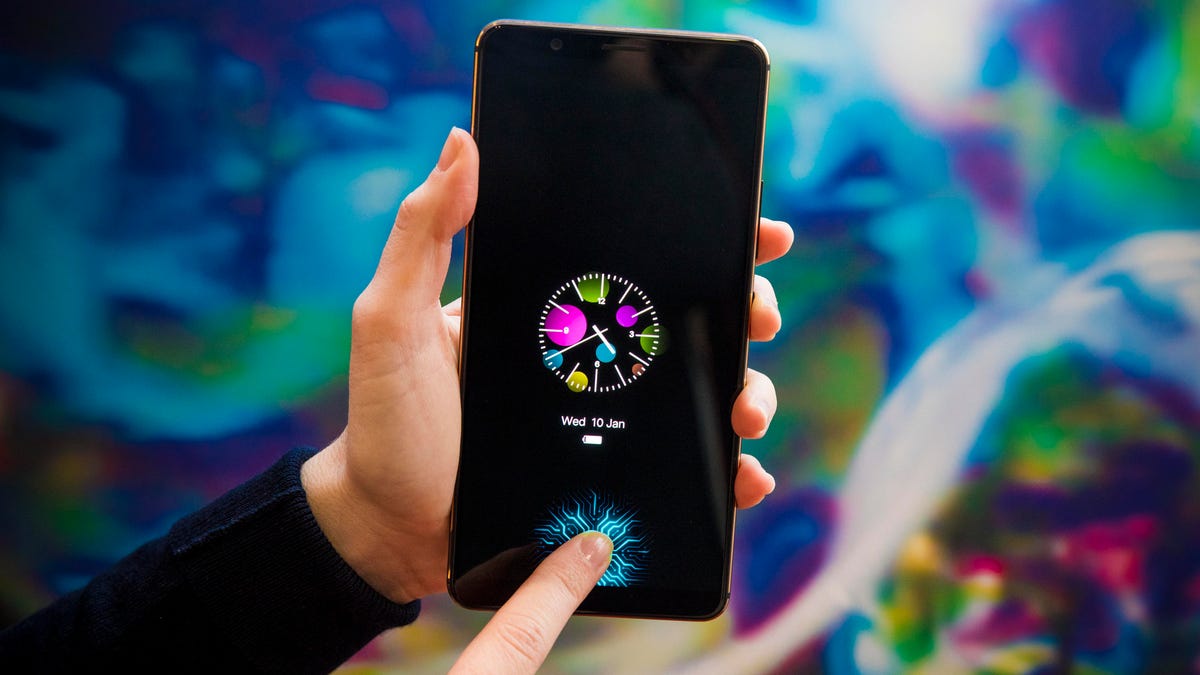Vivo phone shows off first in-screen fingerprint scanner
The tech was rumored to go in the iPhone and Samsung phones, so it's kind of a big deal.

Using the world's first phone with a fingerprint scanner built into the display was as awesome as I hoped it would be.
There's no home button breaking up your screen space, and no fumbling for a reader on the phone's back. I simply pressed my index finger on the phone screen in the place where the home button would be. The screen registered my digit, then spun up a spiderweb of blue light in a pattern that instantly brings computer circuits to mind. I was in.
Such a simple, elegant harbinger of things to come: a home button that appears only when you need it and then gets out of the way. I would bet several Bitcoins that in-display fingerprint sensors become one of 2018's biggest phone trends, starting with high-end devices like the rumored Samsung Galaxy S9 .
But the phone I held in my hands was not the Galaxy S9, which doesn't exist yet. It's a pre-production model by Chinese phonemaker Vivo, and it's still without an official name, price and sale date.
For phone enthusiasts, the real news is that this technology -- which was rumored for the Galaxy S8 and beyond, and also for the iPhone X -- isn't just a bunch of hot air. It's real, and it works.
How in-display fingerprint readers work
In fact, the fingerprint sensor -- made by sensor company Synaptics -- lives beneath the 6-inch OLED display. That's the "screen" you're actually looking at beneath the cover glass. You can see it in our photos here.
This is the sensor that makes it all possible.
When your fingertip hits the target, the sensor array turns on the display to light your finger, and only your finger. The image of your print makes its way to an optical image sensor beneath the display.
It's then run through an AI processor that's trained to recognize 300 different characteristics of your digit, like how close the ridges of your fingers are. It's a different kind of technology than what most readers use in today's phones.
Synaptics, which demoed the Vivo phone in a crowded booth at the back of an interminable hallway, says that the fingerprint reader won't suck up much more battery by illuminating your finger, promising that its power management is equal to industry standards.
Because the new technology costs more to make, it'll hit premium phones first before eventually making its way down the spectrum as the parts become more plentiful and cheaper to make.
Vivo's phone is the first one we've gotten to see with the tech in real life, but it's clear this is just the beginning.
Robots, Google Daydream and a lot of rain: Everything you need to know from Day 1 of CES.
CES 2018: CNET's complete coverage of tech's biggest show.

